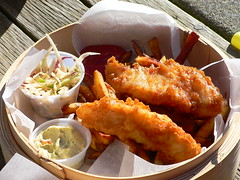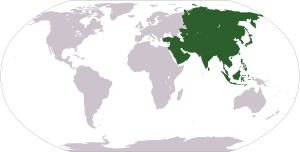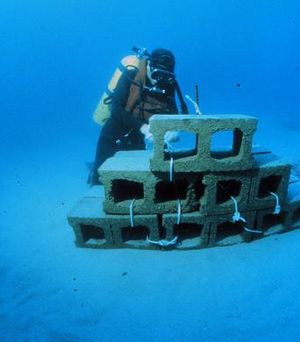The relationship between local fishermen and large-scale fish farms can be fraught as freelance reporter, Alexander Christie-Miller discovers. Originally published by EurasiaNet.org
At Köksal Yılmaz’s fish stall along the Sea of Marmara in Istanbul’s
Bostancı District, bream and sea bass are as popular as ever. But the
days when most of his fish came from these waters are long gone.
“If it wasn’t for fish farms, all of our businesses would go bust,”
said Yılmaz, 50, who gave up his former livelihood as a fisherman eight
years ago when yields dropped so low he could no longer make a living.
Pollution and overfishing have plagued the waters around Istanbul for
decades. But now, with campaigners fighting for tougher regulations to
prevent a total collapse in fish stocks, a boom in illegal trawling has
led to violence.
In late January, Ahmet Aslan, head of a fisheries union on the
European side of Istanbul, was sitting in a teahouse near his home when a
man entered, asked him to step outside, and challenged him over his
opposition to illegal trawling. He then pulled out a pistol and shot him
in the face. Aslan lost his left eye. He has said the attack was a
threat to campaigners from a cartel of illegal fishermen, whom he
accuses of jeopardizing the future of the industry for the sake of
short-term profit.
“Ahmet Aslan’s case was the first, but, unfortunately, I think we
will be seeing more,” said Defne Köryürek, another campaigner against
illegal trawling. “There are no fish, there are lots of fishermen, and
they are under tremendous pressure.”
She estimates there may be more than 300 trawlers operating illicitly
in the Bosphorus and Sea of Marmara, with the practice increasing as
much as fivefold since September 2011, when the Turkish government upped
the minimum catch size for bluefish, a staple of Istanbul fishermen.
The government increased the size restriction on bluefish from 14
centimeters to 20 centimeters, cutting into fishermen’s already narrow
profit margins.
But the revised catch-size is not enough for the scientists,
environmentalists and small-scale fishing unions who campaigned for the
move. The restriction, they say, will not protect the bluefish from
commercial extinction, since it only spawns when it is 24 centimeters
long.
Were that to happen, the bluefish would join a long list of formerly
abundant species that have all but disappeared from Istanbul’s waters,
including turbot, sole, swordfish, bluefin tuna, lobster, and
langoustine.
Kenan Kedikli, head of a small fishermen’s co-operative in Bostancı,
says a vicious cycle has set in with some fishermen responding to
dwindling stocks by fishing in ever more damaging ways. “When I was
young, if you brought an undersize fish into the market, people would
shout at you and heckle you,” he recounted. “But overfishing has
destroyed this healthy culture.”
In November 2011, Durali Koçak, the director-general of Fisheries and
Aquaculture Office of the Ministry of Food, Agriculture and Livestock,
Durali Koçak, vowed to pursue the problem with “rigor and
determination.”
Speaking to Turkey’s state-run Anatolia News Agency, Koçak said the
ministry plans to introduce mandatory dockside inspections and a system
of documentation during the transportation of fish to market. "This will
ensure that accurate data is obtained and enable us to determine
whether or not the fish have been caught in line with the rules or not,”
Koçak said.
Campaigner Köryürek praised the government’s efforts, but said that
the only way to end the problem of illegal fishing is to reduce the high
levels of debt among fishermen, and, ultimately, to reduce the size of
Turkey’s fishing fleet. Others are seeking increased protection for
sensitive ecological areas within the Sea of Marmara.
The Turkish Marine Research Foundation (TÜDAV) has proposed a ban on
all fishing and tourist development and restrictions on marine traffic
around Istanbul’s Princes’ Islands and the Marmara Islands. “Currently,
there are no protected zones at all in the Marmara Sea,” said TÜDAV
President Bayram Öztürk, a professor of marine sciences at Istanbul
University. He has presented the proposal to the government and expects a
decision on it next month, he said.
Öztürk also represents Turkey in a four-year, €9 billion European
Union-led initiative launched in February 2012. The program aims to
protect biodiversity throughout the network of waterways, stretching
from the Black Sea to the mouth of the Mediterranean. “We’re trying to
make protected stepping stones and corridors for marine animals,” said
Öztürk. “If we’re successful, it will be a huge victory for nature.”
But he added that other factors are contributing to the collapse of
fish stocks, including invasive species in the ballast tanks of marine
vessels and pollution, the main sources of which lie far outside
Turkey’s control. “Seventy percent of the land-based pollution in the
Black Sea comes from the Danube. It impacts not only the Black Sea, but
the Marmara Sea and the Aegean Sea,” he said.
Every year, nearly 13 billion cubic meters of industrial and domestic
wastewater from 11 European countries drains from the Danube, carrying
around 260,000 tons of nitrogen and 50,000 tons of phosphorus, along
with a cocktail of toxic metals, according to the International
Commission for the Protection of the Danube. “The first thing that is
needed is international co-operation and concerted action,” said Öztürk.
Many of those interviewed had sweet memories of the days when the
seas surrounding Istanbul teemed with life, and wonder if they will ever
return.
“When I was a girl in Emirgan [a neighborhood on the European side of
the Bosphorus], people would catch fish in buckets,” recalled
campaigner Köryürek. “They would dip them in the water and pull them out
full of fish.”
“Now there’s nothing, and I don’t want to leave that to my children, " she said.
Alexander Christie-Miller is a freelance reporter based in Istanbul.







 \
\


























